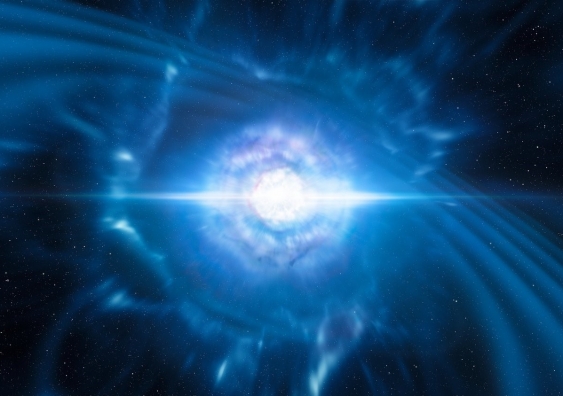Dr Ashley Ruiter and Dr Ivo Seitenzahl from UNSW Canberra were part of a collaboration of international scientists that contributed to the discovery of gravitational waves from a kilonova event, published in the prestigious Nature journal today.
"This is a major breakthrough. This is the first time we have seen gravitational waves from the merger of two neutron stars,” says Dr Seitenzahl, of the School of Physical, Environmental, and Mathematical Sciences.
Astronomers, using a fleet of telescopes from the European Southern Observatory (ESO), picked up the explosion on August 17.
ESO says their telescopes in Chile detected the first visible counterpart to a gravitational wave source rippling the fabric of space-time.
Seconds later, a short gamma-ray burst was spotted by both Fermi (NASA) and INTEGRAL (European Space Agency) space telescopes, coming from the same area.
Scientists knew, based on theory that if they had witnessed two neutron stars combining in an explosive merger then a visible light counterpart, known as a kilonova, would follow.
Astronomers around the world joined forces to use their telescopes to search for the new light source, which they described as looking for a needle in a haystack.
After a few hours, they found it – in a galaxy 130 million light years from Earth.
“The observations we took with the telescopes in Chile now unambiguously show that such mergers of two neutron stars create radioactive elements, which power the light emitted by the kilonova,” says Dr Seitenzahl.
When neutron stars merge, they become furnaces that create heavy chemical elements. The kilonova explosion that follows, spreads those chemical elements throughout space.
"Though we know most elements in the universe are created in stars - either quietly or explosively - we are now able to confirm that specific, heavy elements like silver were created in this neutron star merger,” says Dr Ruiter.
ESO says “the event marks the start of a new era of multi-messenger astronomy”.
“For the first time in history we can now combine light signals with gravitational waves to provide a totally new way to probe the Universe.”
Dr Ruiter and Dr Seitenzahl are part of the ePESSTO (extended Public ESO Spectroscopic Survey of Transient Objects) collaboration, which took the first spectrum of the event.


